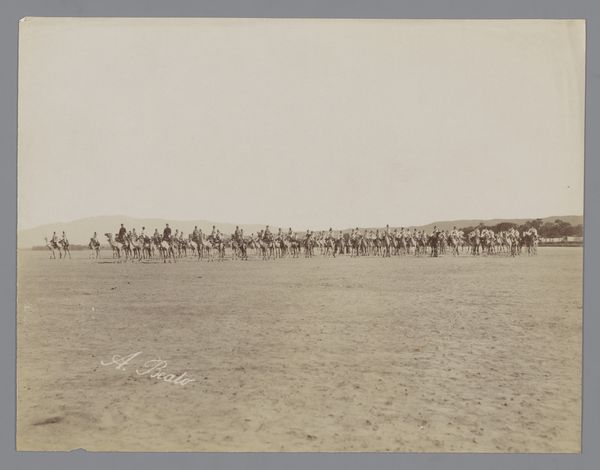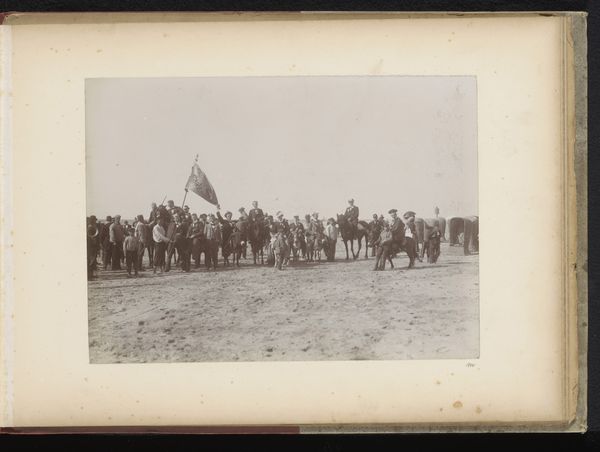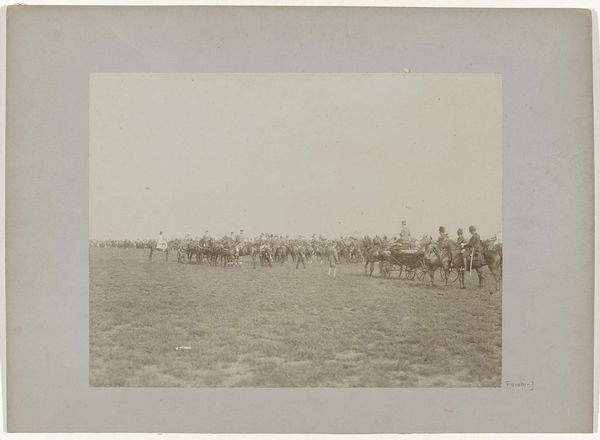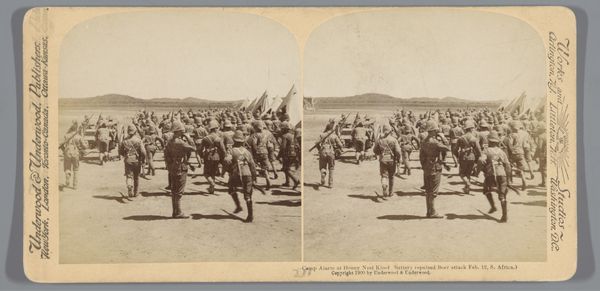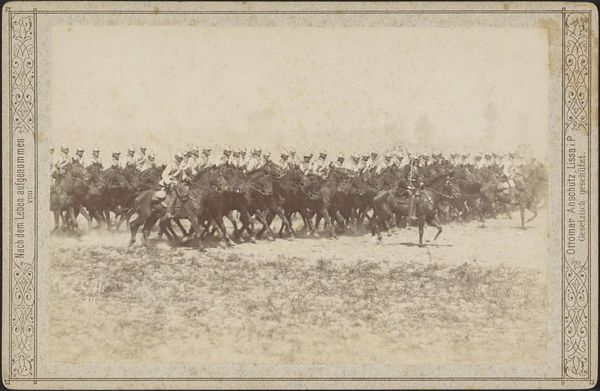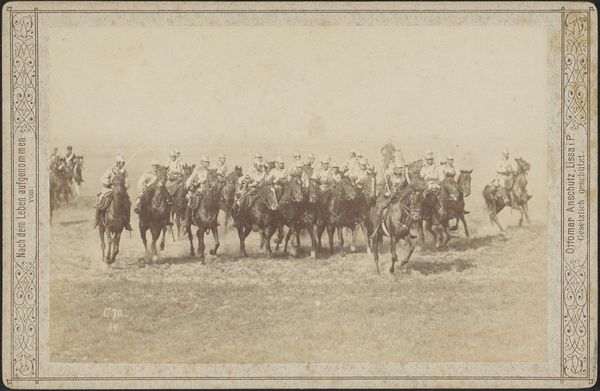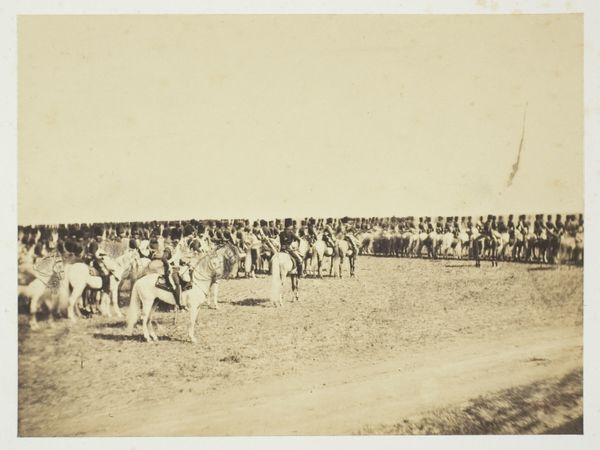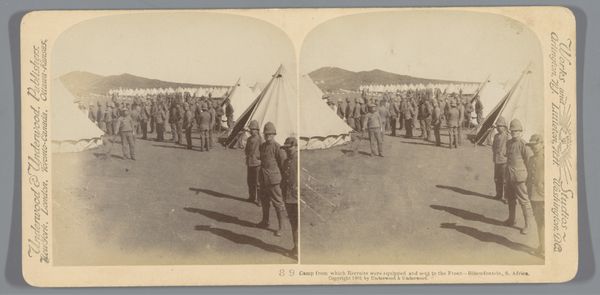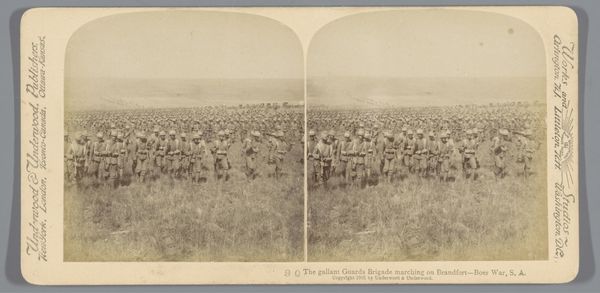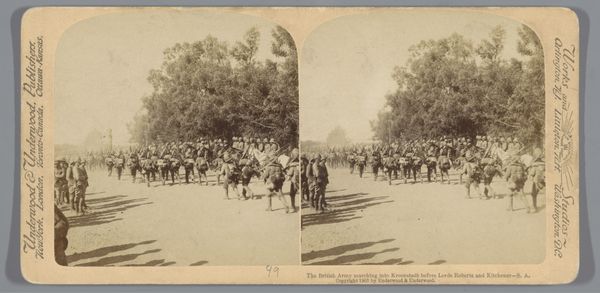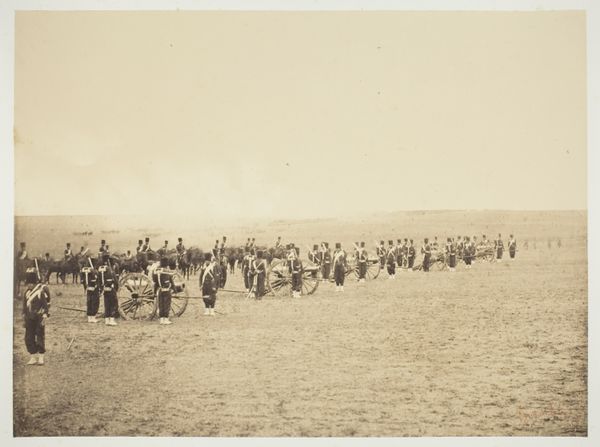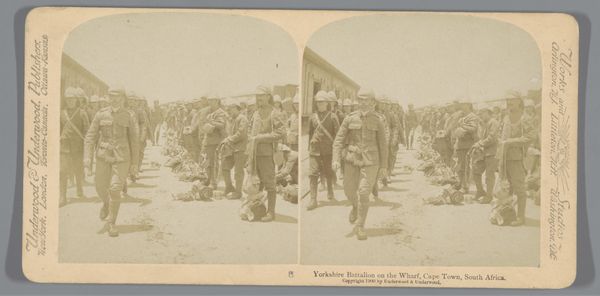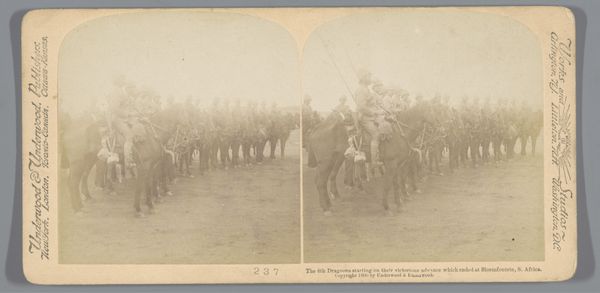![Perzische Kossaken Brigade ["Les cosaques"] by Antoine Sevruguin](/_next/image?url=https%3A%2F%2Fd2w8kbdekdi1gv.cloudfront.net%2FeyJidWNrZXQiOiAiYXJ0ZXJhLWltYWdlcy1idWNrZXQiLCAia2V5IjogImFydHdvcmtzLzkyMzhmMmMxLTE0MTItNDZkMi1iMmM4LTI0Yzk3NjdkNjdiMy85MjM4ZjJjMS0xNDEyLTQ2ZDItYjJjOC0yNGM5NzY3ZDY3YjNfZnVsbC5qcGciLCAiZWRpdHMiOiB7InJlc2l6ZSI6IHsid2lkdGgiOiAxOTIwLCAiaGVpZ2h0IjogMTkyMCwgImZpdCI6ICJpbnNpZGUifX19&w=3840&q=75)
photography, gelatin-silver-print
#
portrait
#
landscape
#
photography
#
group-portraits
#
orientalism
#
gelatin-silver-print
Dimensions: height 155 mm, width 205 mm
Copyright: Rijks Museum: Open Domain
Curator: This gelatin-silver print by Antoine Sevruguin, titled "Perzische Kossaken Brigade," believed to have been taken sometime between 1880 and 1910, offers us a compelling look at the Persian Cossack Brigade. Editor: My first impression? Impressive, yet somewhat… unsettling. There’s a feeling of forced uniformity and a kind of muted anxiety, maybe from knowing these men are en route to some violent event. It's also quite large, isn't it, both in scale and the number of subjects? Curator: Indeed. It's crucial to view Sevruguin's work within the socio-political landscape of Persia at the time. Photography was often used as a tool for documenting power, for shaping national identity. Editor: Exactly, and in this case, also probably reinforcing class divides and colonial ambitions. This feels less like an objective representation, more like an official record, glossing over the inherent complexities of this regiment within a landscape, within its social sphere, at that historical moment. Look at the composition: perfect ranks, stern faces… there’s little individuality. Curator: Sevruguin ran a commercial photography studio that catered to a diverse clientele, including the Qajar court and European travelers. This image would have certainly served multiple functions – documentation, perhaps even a tool for exerting authority but its role in constructing and perpetuating images of power needs examination. The photograph contributes to the romanticized depictions and visual tropes of the region’s military, but what realities lie behind the facade? Editor: Absolutely, these constructed images have immense implications. Consider the impact this kind of representation would have had in perpetuating certain Orientalist fantasies for European audiences. I'm immediately wary of the implied exoticism inherent in photographs of this era. Curator: And there's a responsibility we shoulder in critically examining Sevruguin's position. Understanding the photographer's context and the agency he had or did not have helps nuance what seems like a surface reading of the photograph. It begs the question of whose narrative the art really speaks for, whose history the images preserve? Editor: Ultimately, this image pushes us to challenge our assumptions about power, representation, and the often-invisible ideological forces at play in seemingly simple historical portraits. There’s much more here than meets the casual eye.
Comments
No comments
Be the first to comment and join the conversation on the ultimate creative platform.
